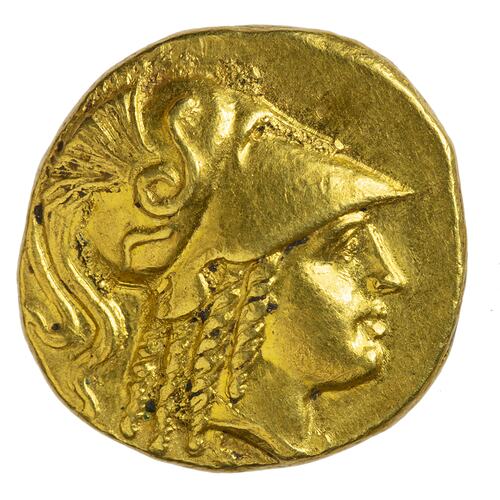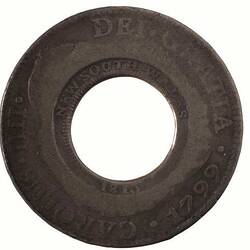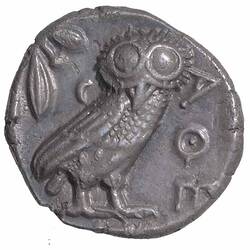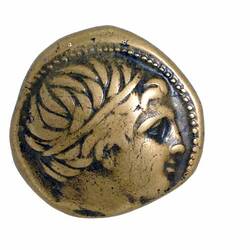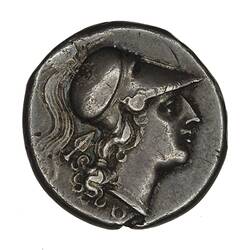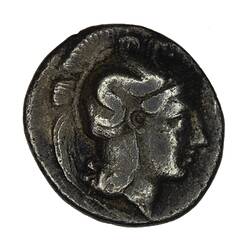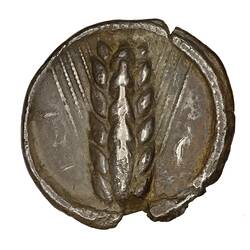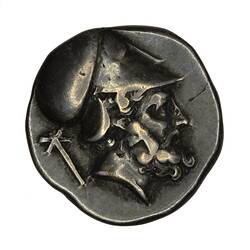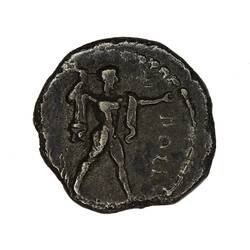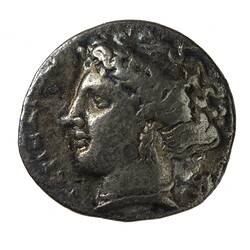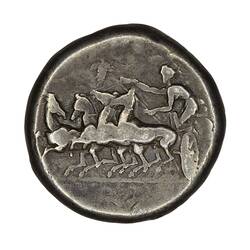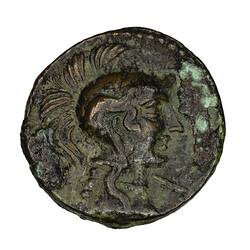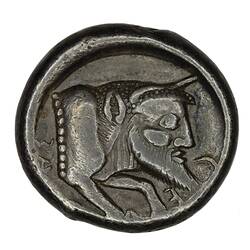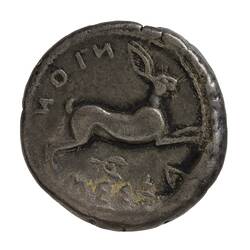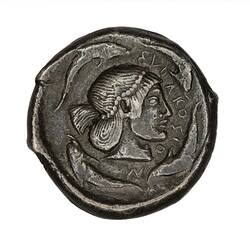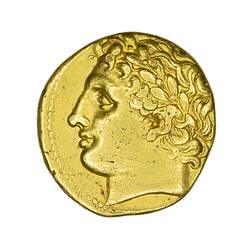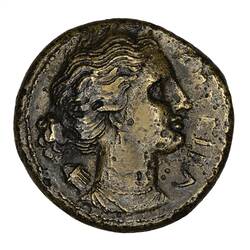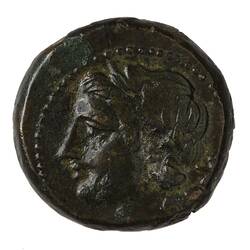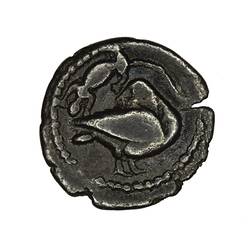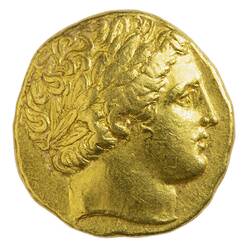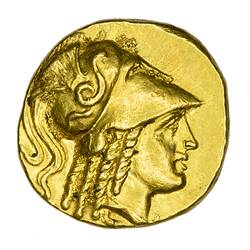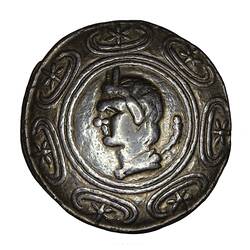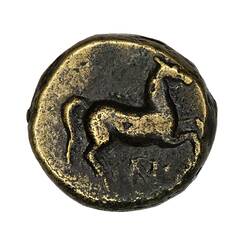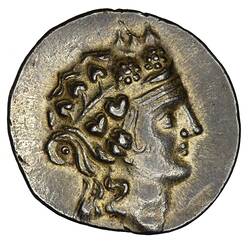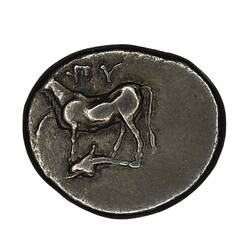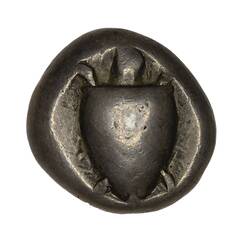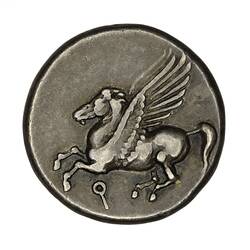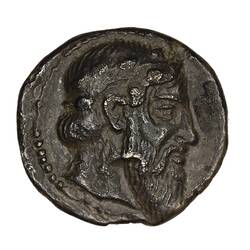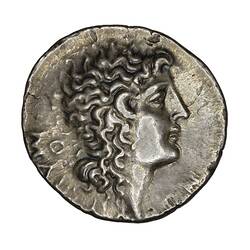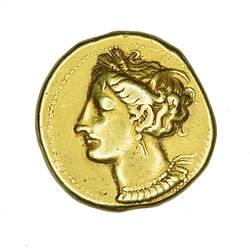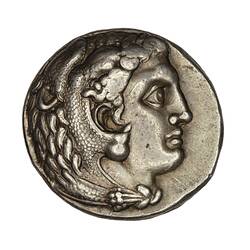Museums Victoria's numismatics collection contains an extensive number of ancient coins spanning the empires of Rome, Greece, Egypt, and the Ancient Near East. About 900 of these coins are from the ancient Greek city states. The collection covers all areas of the Greek empire, from its very beginning to the height of Classical Greece, to the later monarchy of Alexander the Great and the Hellenistic age.
History of the collection:
The majority of these coins came from the private collection of landscape artist Eugene von Guerard who was also the first curator of the numismatics collection, then held by the National Gallery of Victoria. He sold it to the gallery after he retired in 1881. The gallery transferred the entire numismatics collection to the museum in 1976. Other examples of Greek coins have occasionally been acquired through coin auctions in the years since.
Most ancient coins are discovered in archaeological digs, and many of the most exquisite ones are found in burials, or hoards. Hoards are large deposits of coins, jewels and metal objects buried for safekeeping by ancient people fleeing attack but never making it back to retrieve them.
Coin denominations:
During much of the Greek civilisation the standard denomination was the drachma (drachm) and was usually made of silver. The first minted coin was the stater. It was created on the island Aegina in about 600 BCE and featured a sea turtle, promoting their seafaring heritage. A silver stater was worth three drachmas. Other coins came in multiples or divisions of the drachma; the didrachm was 'two drachmas', the tetradrachm was 'four drachmas'. There were six obols in a drachma. The diobol, 'two obols', was worth one third of a drachma. With the creation of the modern Kingdom of Greece, the drachma was reintroduced as the standard denomination of the modern currency in 1832, until it was replaced by the euro in 2001.
What were the coins worth?:
Ancient Greek coins didn't have a value written on them as modern coins do. Their value was determined by the precious metals they were made of (gold, silver, bronze or electrum, a gold and silver alloy) and their weight. The heavier and more precious the metal, the more expensive the coin. The daily wage of a skilled man or hoplite (soldier) was usually one drachma. A woman usually received much less as a wage, if she was paid at all. One drachma also bought about one litre of olive oil. A loaf of bread was worth one obol, while to buy a slave cost upwards of 200 drachmas depending on their skills.
Iconography of the coins:
While the main use of coins was in transactions for goods or services, coins were also used by ancient rulers to promote themselves or their achievements. This was especially important as the currency travelled across their empire. The iconography of the coins could be 'read' to highlight virtues the king wanted to promote: such as the strength of a horse, stag or bull, or to show the king's military prowess by depicting a chariot, or the wealth of the community by depicting wheat or grapes. Some coins might depict the king as a god, goddess or hero such as Athena, Apollo, Poseidon or Herakles. In this way the king could infer that their own rule was like that of a god, and that they too had omnipotent power. Alexander the Great took this approach with his coins, dressing as the Greek hero Herakles. Later his coins depicted himself as his own mythology had already spread across the empire.
Sylloge Nummorum Graecorum Australia project:
For almost 20 years Kenneth Sheedy from Macquarie University, with James Tindall, have been compiling every ancient Greek coin in Australian public collections. Initiated by the British Academy in 1931, the Sylloge Nummorum Graecorum, the 'Collection of Greek Coins', is a project to publish illustrated catalogues of Greek coins in public and private collections in the United Kingdom. This model has been replicated by institutions in many countries around the world. Ken Sheedy and Jim Tindall used images and data from Museums Victoria's ancient Greek coin collection to produce the Australian version of this project. Volume 1 of Sylloge Nummorum Graecorum Australia has been published. The Museums Victoria collection is being prepared for a future publication in this series.
References:
Sharples, J 1986 'The Numismatic Collection of the Museum of Victoria', Journal of the Numismatic Association of Australia, vol. 2, pp. 37-52.
Pullin, R 2011 Eugene von Guerard: Nature Revealed, National Gallery of Victoria, Melbourne.
More Information
-
Keywords
-
Localities
-
Authors
-
Article types
